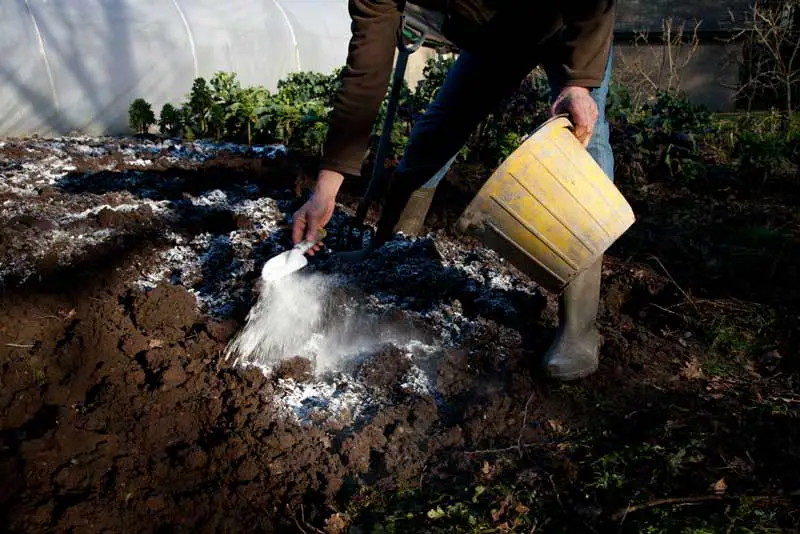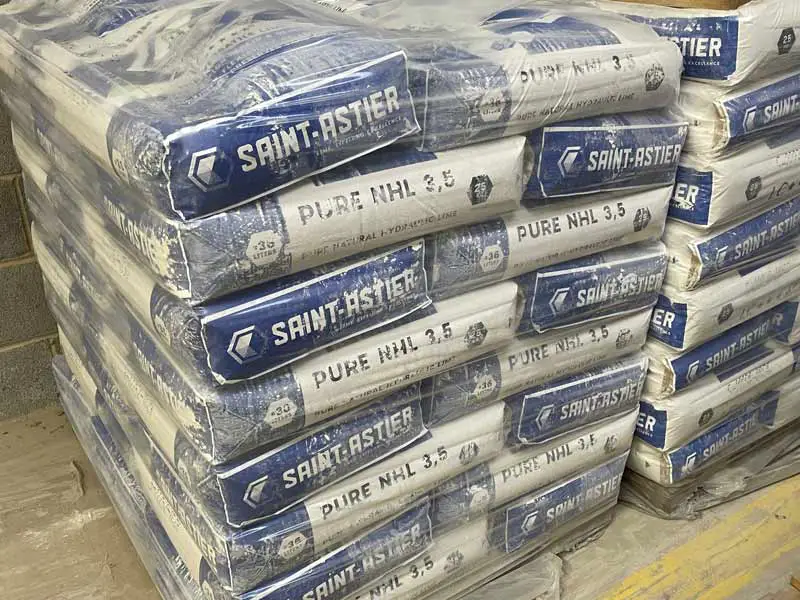
When it comes to gardening, soil health is essential for the growth and success of plants. One way to improve soil health is by adding lime to the soil. Lime is a soil amendment that can help balance the pH levels and increase the nutrient levels in the soil, which can lead to better plant growth. However, different types of lime are available, and it’s essential to know the differences between them to choose the right one for your garden.
The two most commonly used types of lime in gardening are garden lime and builder’s lime. While they may seem similar, there are key differences between the two. Garden lime, or agricultural lime, is made from ground limestone or dolomite and is high in calcium. On the other hand, Builder’s lime is made from burning limestone or other calcium carbonate rocks. This produces a reactive powder called calcium oxide (quicklime) which is then mixed with water and sand for building work.
Understanding the differences between these two main forms of lime can help gardeners choose the right one for their soil needs.
What is Builders Lime?
Builders Lime is a type of lime that is commonly used in construction and masonry. It is made by burning limestone, a sedimentary rock composed mainly of calcium carbonate, in a kiln. This process produces quicklime or calcium oxide, which is then hydrated (slaked) with water to produce hydrated lime or calcium hydroxide. Builders Lime is typically sold in bags or buckets as a white powder or a putty-like substance.
Builders Lime has a high pH level and is very alkaline. It is mainly used in construction as a binding agent in mortar and plaster. Builders Lime is commonly used in the construction of brick and stone walls and in the restoration of historic buildings. Because of its high pH level, it can be used to improve soil quality and reduce soil acidity.
Builders’ Lime is usually used to create lime mortars, lime plasters and lime renders. Additionally, it can be used to make paints, such as limewash and lime paint. It’s important to note powdered hydrated lime should never be used to make straight lime putty, mortars or plasters. It should only be used to help plasticise cement mortars and plasters.

Related article: Are Lime Building Materials Environmentally Friendly?
What is Garden Lime?
Garden lime, or agricultural lime, is a soil amendment made of calcium carbonate. It is commonly used to raise the pH level of acidic soils and improve soil structure. Garden lime is made from ground limestone, dolomite lime, or other rocks with a high lime content and is high in calcium.
When applied to soil, garden lime reacts with the acid in the soil, raising the pH level and making the soil less acidic. This can help to promote healthy plant growth, as many plants prefer a neutral soil pH. Garden lime can also help to improve soil structure, making it easier for plants to access nutrients and water.
Garden lime is available in various forms, including powder and pellets. It is important to follow the instructions on the packaging carefully when applying garden lime, as over-application can lead to high soil alkalinity and damage to plants.
Here is a fantastic garden lime: Elixir Gardens Dolomite Lime
Key Differences Between Builders Lime and Garden Lime
Composition
Builders’ lime is typically made of burnt or hydrated lime, while garden lime is made of calcium carbonate rocks. Burnt lime (quicklime) is produced by heating limestone in a kiln until all the carbon dioxide is driven off. Hydrated lime is made by adding water to quicklime in a specialised lime slaker. Garden lime is made by crushing limestone or other calcium-rich rocks.
Builders’ lime is more concentrated than garden lime and neutralises soil acidity more quickly. However, if used incorrectly, it can be too strong for plants and cause root burn. Garden lime is milder and safer for plants but takes longer to work.
Uses
Builders’ lime is commonly used in construction and masonry work, such as for mortar and plaster. Garden lime is primarily used as an amendment to reduce soil acidity and improve soil structure. It can also be used to provide calcium and magnesium to plants.
Application
Builders’ lime can be added to soil in small quantities, but it should be done cautiously. Garden lime can be added directly to the soil, but it should be done in moderation and mixed thoroughly to ensure even distribution.
Builders’ and garden lime should be applied based on soil test results to ensure the correct amount is used. Over-application can cause harm to plants and the environment.
Here is a great soil tester to determine if you need to add lime to your garden.
Cost
Builders’ lime is typically more expensive than garden lime, as it is a more concentrated product. However, the cost can vary depending on the source and location. Garden lime is generally more affordable and widely available.
Overall, builders’ lime and garden lime have different compositions and uses, and they should be used appropriately based on their intended purpose. Careful consideration should be given to the application and amount used to ensure the health of plants and the environment.
Related article: Is Lime Harmful to Soil? The Truth You Need to Know
When to Use Builders Lime
Builders’ lime works by raising the soil’s pH level, making it less acidic. This is important because plants need a certain pH level to grow and thrive. If the soil is too acidic, plants may not be able to absorb the nutrients they need from the soil. This can lead to stunted growth, yellowing leaves, and poor fruit or vegetable production.
Builders’ lime is particularly useful in areas where the soil is naturally acidic, such as in regions with high rainfall or areas with many coniferous trees. It can also be used to treat soil that has become too acidic due to the overuse of fertilisers or other soil amendments.
When to Use Garden Lime
If your soil has a pH level of less than 6.0, it is considered acidic and may need to be treated with garden lime. Acidic soil can cause plant nutrient deficiencies and reduce their growth and yield. Garden lime helps neutralise the soil’s acidity, making it more suitable for growing a variety of plants.
Garden lime is typically added to soil in the fall or winter months before the planting season. This allows the lime to break down and release its nutrients into the soil over time. It is important to note that garden lime should not be used on already alkaline soil, as it can cause nutrient imbalances and harm plants.
When using garden lime, following the manufacturer’s instructions for application rates and methods is important. Overuse of garden lime can negatively affect soil quality and plant growth.
Related article: Benefits of Adding Lime to Soil: Improve Soil Health and More
Conclusion
Builders’ lime and garden lime are both calcium lime-based products that can be used to adjust soil pH levels. Builders’ lime, also known as hydrated lime or slaked lime, is highly reactive and can be dangerous to handle due to its caustic nature. It is typically used in construction, as a mortar or plaster additive, or for water treatment. Garden lime, on the other hand, is a safer product to use in gardening and agriculture, as it is less reactive and more gentle on plants.

While both builder’s lime and garden lime can increase soil pH levels, garden lime is the preferred option for most gardening applications. Garden lime is typically applied in planting mediums to help balance pH levels and provide essential nutrients to plants. It is also more readily available at garden centres and online stores.
It is important to note that garden and builders’ lime should not be used interchangeably. Builders’ lime can be too harsh for plants and can damage roots and foliage.
Overall, garden lime and builders lime have distinct differences in terms of their chemical composition, reactivity, and intended use. When choosing between these products, it is important to consider the specific application and use the appropriate product accordingly.

